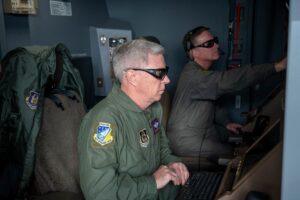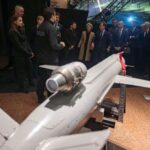
Gear that will allow boom operators on the Boeing [BA] KC-46A Pegasus tanker to continue their work in chemical and biological agent environments is a requirement that the U.S. Air Force Life Cycle Management Center is working through. Next year, AFLCMC is planning to certify new self-protection material for boom operators in tankers with the Remote Vision System (RVS) 1.0 and to field a new self-protection design under RVS 2.0 (Defense Daily, June 26). AFLCMC said that the KC-46 does…














